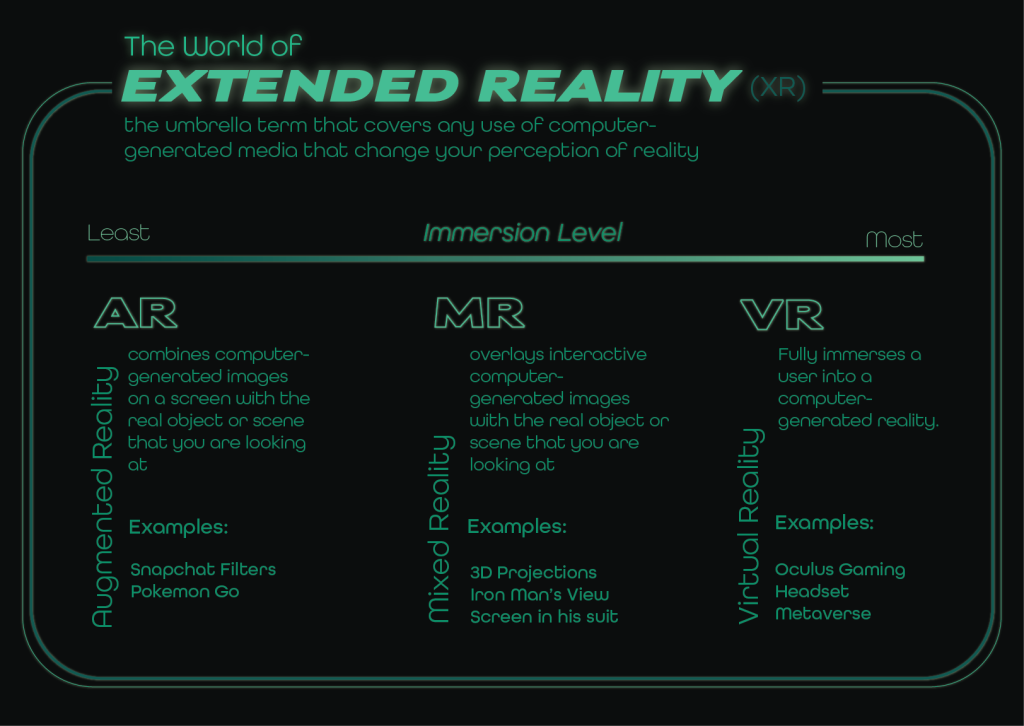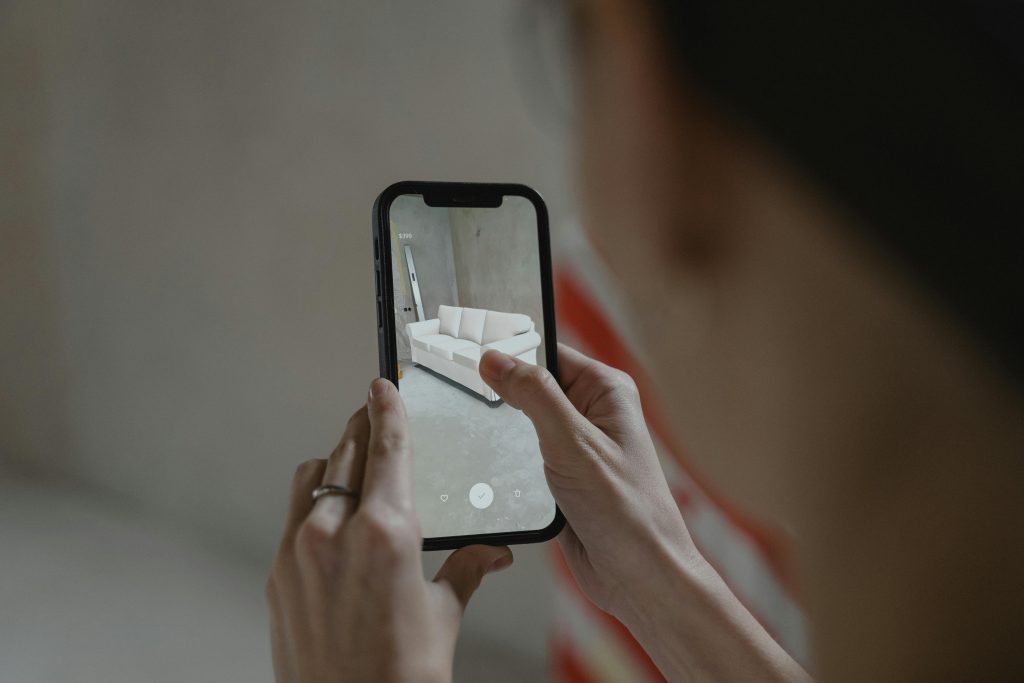What is AR?
One of the most frequently asked questions that we get at NewForge is, “What is augmented reality?”
According to the Oxford dictionary, “augmented reality (AR) is a technology that combines computer-generated images on a screen with the real object or scene that you are looking at.”
To put it simply, augmented reality is the enhancing (or augmenting) of your view of the real world using an overlay of computer-generated media.

The terms, extended reality (XR), mixed reality (MR), and virtual reality (VR) are often used in conjunction with augmented reality; but, if you’re not in the industry you may not know what these terms mean.
Extended reality (XR) is the umbrella term that covers any use of computer-generated media to change your perception of reality. Augmented Reality exists under the XR umbrella, along with MR and VR.
What makes AR, MR, and VR different is how immersive they are. On one end, you have VR which fully immerses a user into a computer-generated reality. And on the other end, you have augmented reality which only adds a computer-generated overlay to the real world. Between the two, you have mixed reality, which isn’t fully immersive like VR but more so than AR.
You may not realize it, but you’ve more than likely used AR before. Whether you were a big Pokémon Go fan in 2016 or if you love using filters on your Snapchat selfies, AR has become fairly commonplace.
A brief history of AR
Augmented reality saw its first surge in popularity in the 2010s. With big companies starting to use it in advertising and the introduction of Snapchat and Google Glass. However, it has been around for much longer than that.
Author, L. Frank Baum, explored the concept of a pair of smart glasses in his novel, The Master Key, all the way back in 1901.
In the 60s, the Sensorama was introduced to the world as the first attempt at augmenting reality using technology. The idea was a booth that would use all 5 senses to take immersion to another level. The booth came complete with screens, fans, scent emitters, and a stereo sound system.
The first AR head-mounted displays were also produced in the 1960s in Salt Lake City. However, these were extremely heavy, having to be suspended from the ceiling to be worn.
The idea of smart glasses and head-mounted displays was explored more throughout the 80s, but we didn’t see any significant changes until the introduction of the Google Glass.
Google’s introduction of the Google Glass in 2012 is what brought smart glasses to the consumer landscape. Along with the introduction of Snapchat filters in the 2010s, augmented reality officially hit the mainstream consciousness.
This sparked an exploration of the different applications for AR and smart glasses. And not just within the consumer market, but in fields like manufacturing and medical.

Applications of AR
Many people have come to associate AR with things like gaming and Snapchat filters; however, AR has an endless number of uses that are more than just “for fun.”
AR enhances learning, aids in connecting people, simplifies any process that has steps, and helps with quality control. There’s a possible use case for augmented reality software in any field that could benefit from these things.
Imagine being dropped into a manufacturing plant and asked to build a dryer. You have all the materials in front of you but have no idea what to do with them.
Then you’re provided with a pair of AR smart glasses. When you put them on, you see step-by-step instructions through the head-mounted display.
The instructions guide you on which parts you’ll need, how and where to place them, and which tools to use to create a functioning dryer.
At the end of your process, you’re almost done but can’t seem to get one piece to fit. Through your headset, you call a dryer expert. The expert on the other end sees what you see through the camera, in real-time. They use AR tools to circle where you have the issue; in this case, an incorrect-sized bolt.
With that, you just made a functioning dryer.
This scenario is realistic as to how AR is being used in manufacturing today. It provides a way for manufacturers to get information while being hands-free to complete their tasks. And on top of that, it simplifies their training and processes, meaning things are getting done faster without quality suffering.
None of this is exclusive to manufacturing though.
In logistics, end users can use interactive work instructions to find the products they’re looking for in a warehouse and verify their inventory items as they pick an order, meaning nothing gets left out. AR helps warehouse workers increase their productivity and lower order errors along with many other benefits.
Smart glasses and AR are being adopted into operating rooms, helping to reduce the number of complications in surgery. For example, in South Korea, anesthesiologists did a study using head-mounted AR displays to insert radial arterial lines into patients. The smart glasses increased the success rate by 15.5% and the speed at which the procedure was done.
AR is even being used in tourism, education, navigation, marketing, architecture, design, and fitness. The world of extended reality is truly unlimited.
The Future of AR
With such a variety of uses, we will only see an increase in AR use as time goes on. People have only begun scratching the surface of what AR can do in recent years. The introduction and increasing popularity of things like VR gaming and the Metaverse shows that a boom in extended reality is coming. Will you be ready for it?
Sources
A brief history of Augmented Reality – Numerized
What’s the Difference Between AR, VR, and MR? | The Franklin Institute (fi.edu)

